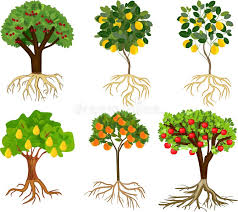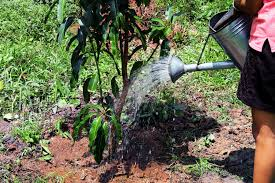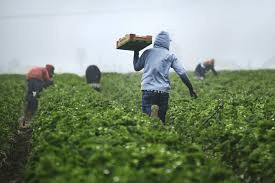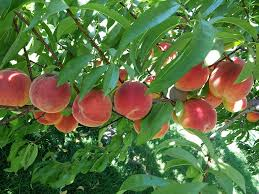Fruit cultivation is a rewarding activity that allows individuals to grow their own food while enjoying the beauty of nature. Whether you’re planning a small backyard garden or a larger orchard, understanding the basics of fruit cultivation can lead to a successful harvest.
This guide will walk you through the types of fruit trees and bushes, soil preparation, and planting techniques, providing you with the knowledge to start your fruit-growing journey.
Types of Fruit Trees
Fruit trees are a vital part of fruit cultivation, offering various delicious fruits. Here are some popular types of fruit trees you can consider:
1. Apple Trees: Produce a wide range of apple varieties, from sweet to tart, and are relatively easy to grow in many climates.
2. Pear Trees: Similar to apples, pears come in many varieties and thrive in well-drained soil.
3. Cherry Trees: Known for their beautiful blossoms, cherry trees produce sweet or sour fruits, depending on the variety.
4. Peach Trees: Offer juicy peaches in summer and require warm climates for optimal growth.
5. Citrus Trees: Include oranges, lemons, and limes, which thrive in warmer regions and provide fresh fruit year-round.
6. Plum Trees: Produce sweet and tart plums, requiring well-drained soil and plenty of sunlight.
Types of Fruit Bushes

Fruit bushes are another excellent option for home gardeners, often taking up less space than trees. Here are some common fruit bushes:
1. Raspberry Bushes: Produce sweet, red or black berries in summer and can grow in various soil types.
2. Blackberry Bushes: Similar to raspberries, blackberries are hardy and produce sweet fruits, often in thorny varieties.
3. Blueberry Bushes: Require acidic soil but yield delicious blueberries, rich in nutrients.
4. Currant Bushes: Produce small, tart berries in red, black, or white varieties, thriving in cooler climates.
5. Gooseberry Bushes: Known for their tangy berries, gooseberries are easy to grow and come in thorny and thornless varieties.
6. Cranberry Bushes: These low-growing bushes produce tart berries and thrive in wet, acidic soil conditions.
Soil Preparation for Fruit Cultivation
Preparing the soil is a crucial step in fruit cultivation, as it directly affects plant growth and fruit quality. Follow these steps to prepare your soil:
1. Test Soil pH: Use a soil test kit to check if your soil is acidic, neutral, or alkaline. Most fruit trees prefer slightly acidic to neutral pH (6.0-7.0).
2. Amend the Soil: Based on the test results, you may need to add lime to raise the pH or sulfur to lower it. Organic matter like compost can improve soil structure and fertility.
3. Clear the Area: Remove any weeds, rocks, or debris from the planting area to prevent competition for nutrients and water.
4. Loosen the Soil: Use a garden fork or tiller to break up compacted soil. This helps improve drainage and root penetration.
5. Add Fertilizer: Incorporate a balanced fertilizer or organic amendments into the soil to provide essential nutrients for your fruit plants.
6. Level the Ground: Rake the area to create a level planting surface, which helps with water drainage and plant stability.
Read Also: Gray Leaf Spot (Stemphylium spp) – Symptoms and Damage Control
Planting Techniques for Fruit Trees

Planting fruit trees correctly is essential for their growth and productivity. Follow these steps to plant your fruit trees effectively:
1. Choose the Right Time: Plant fruit trees in early spring or fall when the weather is mild, and the ground is workable.
2. Select Healthy Trees: Purchase trees from a reputable nursery, ensuring they are disease-free and well-rooted.
3. Dig a Proper Hole: Dig a hole twice as wide as the root ball and slightly deeper than the root system. This allows for proper root growth.
4. Prepare the Roots: Gently loosen any tightly bound roots and remove any damaged ones to encourage healthy growth.
5. Position the Tree: Place the tree in the center of the hole, making sure the graft union (swelling on the trunk) is above the soil level.
6. Backfill the Hole: Fill the hole with soil, gently packing it down to eliminate air pockets. Water thoroughly after planting.
7. Mulch: Apply a layer of organic mulch around the base to retain moisture, suppress weeds, and regulate soil temperature.
Planting Techniques for Fruit Bushes
Planting fruit bushes requires a slightly different approach. Here’s how to plant them successfully:
1. Timing Matters: Like fruit trees, the best time to plant fruit bushes is in early spring or fall.
2. Choose Healthy Bushes: Buy from a reliable source to ensure the plants are healthy and free from pests.
3. Dig a Hole: Create a hole that is wide and deep enough to accommodate the roots without crowding.
4. Prepare the Roots: If the roots are bound, gently tease them apart to encourage outward growth.
5. Position the Bush: Place the bush in the hole, ensuring the crown (where the roots meet the stem) is level with the soil surface.
6. Fill the Hole: Backfill the hole with soil, packing it gently to remove air pockets. Water the bush thoroughly after planting.
7. Apply Mulch: Add a layer of mulch around the base to help retain moisture and suppress weeds.
Watering and Irrigation Methods
Proper watering is essential for the health and productivity of fruit trees and bushes. Here are effective methods for watering and irrigation:
1. Drip Irrigation: This method delivers water directly to the roots through a network of tubes, minimizing water loss and ensuring deep root penetration.
2. Soaker Hoses: These hoses allow water to seep out slowly along their length, providing consistent moisture to the soil while reducing evaporation.
3. Hand Watering: Using a watering can or hose with a nozzle, water your plants at the base to prevent wetting the leaves, which can lead to disease.
4. Sprinkler Systems: These can be used for larger areas, providing even coverage but may lead to higher evaporation rates. Ensure to water in the early morning or late evening for better efficiency.
5. Mulching: Apply a layer of organic mulch around your plants to retain soil moisture, reduce evaporation, and suppress weeds.
6. Monitoring Soil Moisture: Regularly check soil moisture levels using your finger or a moisture meter to determine when to water, avoiding over or under-watering.
Fertilization Practices
Fertilization is key to ensuring healthy fruit plants. Here’s how to fertilize effectively:
1. Soil Testing: Before fertilizing, conduct a soil test to determine nutrient levels and pH, helping you choose the right fertilizers.
2. Organic Fertilizers: Use compost, manure, or well-rotted organic matter to enrich the soil with nutrients naturally.
3. Synthetic Fertilizers: If necessary, select a balanced fertilizer with equal parts nitrogen, phosphorus, and potassium (NPK) to promote overall plant health.
4. Timing of Application: Fertilize in early spring when plants are waking up, and again in mid-summer for optimal growth and fruit production.
5. Method of Application: Spread granulated fertilizers evenly around the base of the plants, avoiding direct contact with stems, or use liquid fertilizers according to package instructions.
6. Watering After Fertilization: Water your plants after applying fertilizer to help dissolve it and carry nutrients down to the root zone.
Pruning Techniques for Healthy Growth
Pruning is essential for maintaining the health and productivity of fruit trees and bushes. Here’s how to prune effectively:
1. Pruning Timing: The best time to prune fruit trees is during late winter or early spring before new growth starts. For bushes, prune after harvesting.
2. Remove Dead or Diseased Wood: Cut out any dead, damaged, or diseased branches to promote healthy growth and prevent the spread of diseases.
3. Shape the Tree or Bush: Thin out crowded branches to improve air circulation and sunlight penetration, which helps in fruit production.
4. Cut at the Right Angle: Make clean cuts at a 45-degree angle to help water runoff and promote healing.
5. Use Sharp Tools: Ensure your pruning shears or saws are sharp to make clean cuts, reducing the risk of damaging the plant.
6. Clean Up Debris: After pruning, clean up fallen branches and leaves to prevent disease and pest problems.
Pest and Disease Management
Effective pest and disease management is crucial for successful fruit cultivation. Here’s how to protect your plants:
1. Regular Monitoring: Inspect your plants regularly for signs of pests or diseases, such as discolored leaves, spots, or visible insects.
2. Natural Predators: Encourage beneficial insects like ladybugs and lacewings that feed on harmful pests.
3. Organic Treatments: Use organic pesticides like neem oil or insecticidal soap to manage pest populations without harming beneficial insects.
4. Crop Rotation: Rotate crops annually to reduce the risk of soil-borne diseases and pests.
5. Clean Garden Tools: Sterilize your tools after use to prevent the spread of diseases from one plant to another.
6. Remove Infected Plants: If you notice a plant suffering from a serious disease, remove it immediately to prevent the spread to healthy plants.
Read Also: Recommended Number of Ruminant Animals per Housing Unit for Fattening
Harvesting and Post-Harvest Handling

Harvesting your fruits at the right time and handling them properly is essential for quality. Here’s how to do it:
1. Know the Right Time to Harvest: Each fruit type has its own harvesting period. For example, apples should be harvested when they are firm and their color has deepened.
2. Use Proper Tools: Use sharp, clean tools for harvesting to avoid damaging the plants or the fruits.
3. Handle with Care: Gently pick or cut fruits from the plant to avoid bruising, which can lead to spoilage.
4. Post-Harvest Cleaning: Wash fruits gently to remove dirt and pesticide residues.
5. Store Properly: Place harvested fruits in a cool, dry place or refrigerate them if necessary to extend their shelf life.
6. Monitor for Ripening: Some fruits continue to ripen after being picked. Check them regularly to ensure they are consumed or used at their best quality.
Fruit cultivation can be a fulfilling and productive endeavor for anyone interested in growing their own food. By understanding the different types of fruit trees and bushes, preparing your soil, following proper planting techniques, and employing effective watering, fertilization, pruning, pest management, and harvesting methods, you can create a thriving garden or orchard.
Read Also: 4 Steps to help an Orange Tree Produce Sweet Oranges
Frequently Asked Questions
We will update this section soon.

